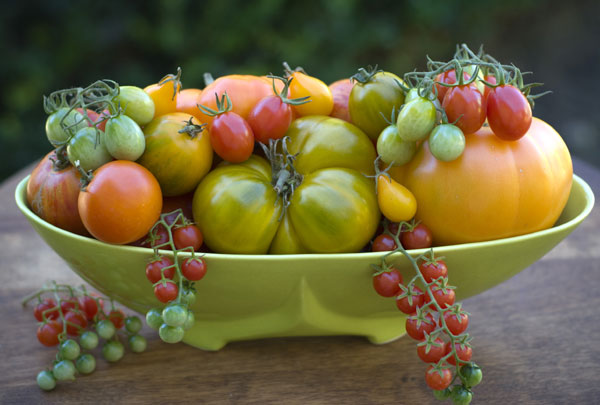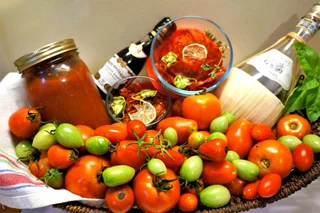Tomato Plant Care: How to Grow and Maintain Healthy Tomatoes
Choosing the Right Tomato Varieties
Selecting the appropriate tomato varieties for your garden is crucial. Consider these factors:
- Growing space: Determinate varieties are compact, while indeterminate types can grow quite tall.
- Climate: Some varieties are better suited to certain weather conditions.
- Purpose: Choose between slicing, paste, or cherry tomatoes based on your culinary needs.
- Disease resistance: Look for varieties with built-in resistance to common tomato diseases.
Popular tomato varieties include:
- Beefsteak: Large, meaty fruits perfect for sandwiches
- Roma: Ideal for sauces and canning
- Cherry: Sweet, bite-sized fruits great for snacking
- Heirloom: Unique flavors and colors, often with interesting histories

Planting Your Tomatoes
Proper planting sets the stage for healthy growth. Follow these steps:
- Timing: Plant after the last frost date in your area.
- Location: Choose a spot with full sun (6-8 hours daily).
- Soil preparation: Enrich soil with compost and ensure good drainage.
- Spacing: Allow 18-24 inches between plants for proper air circulation.
- Planting depth: Bury stems up to the first set of leaves to encourage strong root development.
Essential Care Tips for Thriving Tomato Plants
Watering Wisely
Consistent moisture is key to tomato plant health. I’ve found that deep, infrequent watering encourages strong root growth. Aim to provide 1-2 inches of water per week, adjusting based on rainfall and temperature.
Pro tip: Water at the base of the plant to avoid wetting the leaves, which can lead to fungal diseases.

Feeding for Optimal Growth
Tomatoes are heavy feeders. Supplement your initial soil preparation with regular fertilization:
- Start with a balanced fertilizer (10-10-10) at planting time.
- Switch to a phosphorus-rich fertilizer (5-10-5) when flowers appear to promote fruit development.
- Apply organic mulch to retain moisture and slowly release nutrients.
Supporting Your Plants
Most tomato varieties benefit from support structures:
- Cages: Ideal for determinate varieties
- Stakes: Great for indeterminate types
- Trellises: Excellent for maximizing vertical space
Proper support prevents fruit from touching the ground and improves air circulation.

Pruning for Productivity
Strategic pruning can boost your tomato yield:
- Remove suckers (small shoots growing between main stem and branches) on indeterminate varieties.
- Trim lower leaves as the plant grows to improve air circulation.
- Top the plant a month before the first frost to encourage ripening of existing fruit.
Pest Management
Vigilance is key in managing tomato pests. Common culprits include:
- Tomato hornworms
- Aphids
- Whiteflies
- Cutworms

Implement these eco-friendly pest control methods:
- Handpick larger pests
- Use insecticidal soaps for smaller insects
- Encourage beneficial insects like ladybugs and lacewings
- Practice crop rotation to disrupt pest life cycles
Disease Prevention
Tomatoes can fall victim to various diseases, but prevention is possible:
- Choose disease-resistant varieties
- Maintain proper spacing for air circulation
- Water at the base of the plant
- Remove and destroy diseased plant material promptly
- Practice crop rotation
Common tomato diseases include:
- Early blight
- Late blight
- Fusarium wilt
- Verticillium wilt

Harvesting Your Tomatoes
The moment you’ve been waiting for – harvest time! Here’s how to know when your tomatoes are ready:
- Color: Most varieties turn fully red when ripe, but some may be yellow, purple, or striped.
- Texture: Ripe tomatoes yield slightly to gentle pressure.
- Ease of picking: A ripe tomato should come off the vine easily with a gentle twist.
For the best flavor, allow tomatoes to ripen on the vine. However, if frost threatens, you can pick green tomatoes and ripen them indoors.
Extending the Season
Don’t let the growing season end too soon! Try these techniques to extend your tomato harvest:
- Use row covers or cold frames to protect plants from early frosts.
- Plant determinate varieties for a late-season crop.
- Try growing cherry tomatoes in containers that can be moved indoors.

Troubleshooting Common Issues
Even with the best care, you may encounter some challenges. Here are solutions to common problems:
- Blossom end rot: Caused by calcium deficiency or irregular watering. Maintain consistent moisture and consider adding calcium to the soil.
- Cracking: Results from rapid growth after rain. Maintain even watering and harvest promptly when ripe.
- Leaf curl: Often a response to environmental stress. Ensure proper watering and protect plants from extreme temperatures.
- Yellow leaves: Can indicate nutrient deficiencies or overwatering. Adjust fertilization and watering practices as needed.
Preserving Your Tomato Harvest
With a bountiful harvest, you’ll want to savor your tomatoes year-round. Try these preservation methods:
- Canning: Perfect for sauces and whole tomatoes
- Freezing: Great for use in future cooking
- Drying: Creates delicious sun-dried tomatoes
- Fermenting: Make your own tomato-based condiments

The Joy of Tomato Gardening
Growing tomatoes is more than just a hobby – it’s a journey of discovery and satisfaction. Each season brings new lessons and the thrill of biting into that first sun-warmed tomato. As you gain experience, you’ll develop your own techniques and preferences, making each harvest uniquely yours.
Remember, successful tomato plant care is a balance of attentiveness and patience. By providing the right conditions and care, you’re setting the stage for nature to work its magic. The result? A garden full of healthy, productive tomato plants that will reward you with an abundance of delicious, homegrown tomatoes.
So, roll up your sleeves, get your hands dirty, and embark on your tomato-growing adventure. The rewards – both in terms of fresh, flavorful fruit and the joy of nurturing life – are boundless.
People also ask:
How often should I water my tomato plants?
Aim for 1-2 inches of water per week, adjusting based on rainfall and temperature. Water deeply and less frequently to encourage strong root growth.
What’s the best fertilizer for tomatoes?
Start with a balanced fertilizer (10-10-10) at planting, then switch to a phosphorus-rich fertilizer (5-10-5) when flowers appear.
How do I prevent tomato plant diseases?
Choose disease-resistant varieties, maintain proper spacing, water at the base of the plant, and practice crop rotation.
When should I harvest my tomatoes?
Harvest when the fruit is fully colored, yields slightly to gentle pressure, and comes off the vine easily with a gentle twist.
How can I ripen green tomatoes at the end of the season?
Pick green tomatoes and place them in a paper bag with a ripe apple or banana. The ethylene gas will help them ripen.
Read also: https://plantgrowup.com/radish-growing-tips/